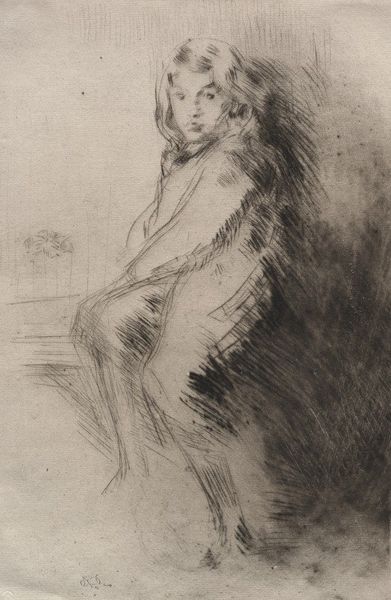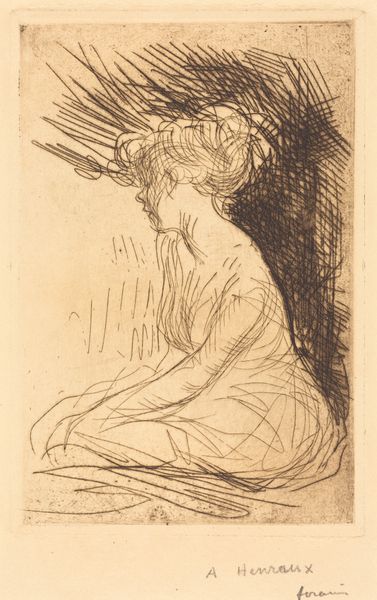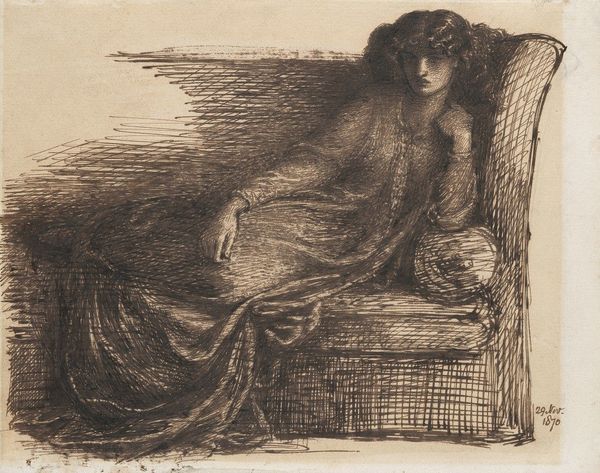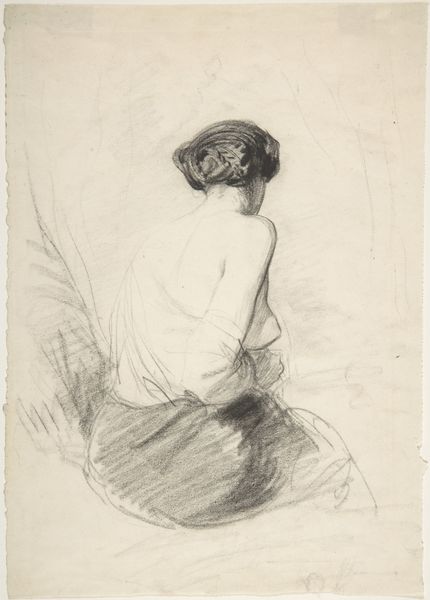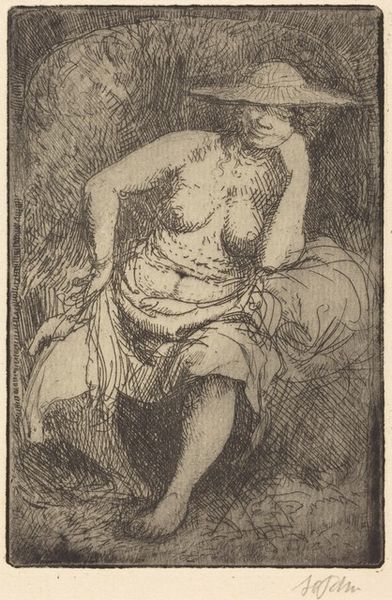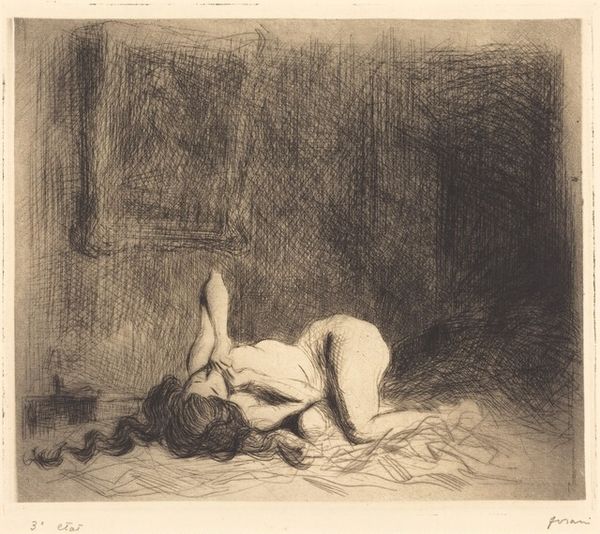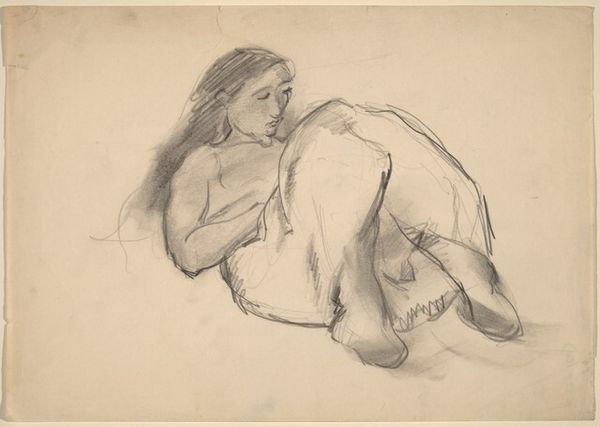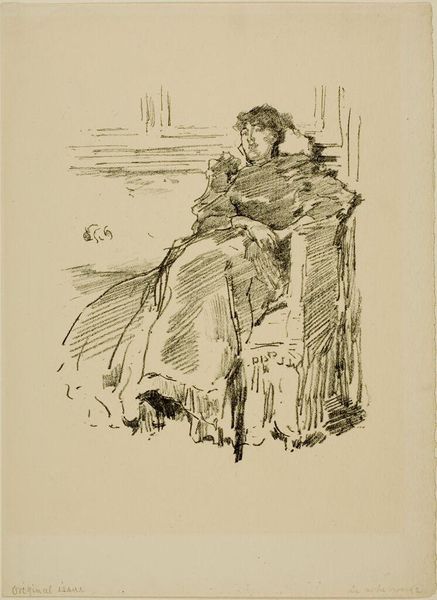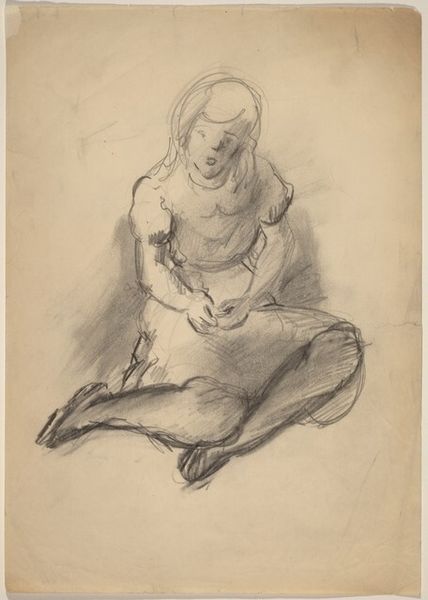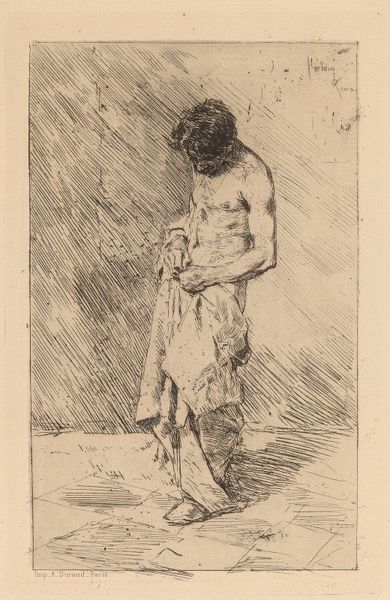
Copyright: Public Domain: Artvee
Curator: Jean-Louis Forain's etching, "Nude Woman Seen from the Back," created around 1910, immediately strikes me as introspective. There’s a vulnerability present, would you agree? Editor: Absolutely. The first impression is melancholy. The muted tones and the woman's posture exude a sense of resignation, typical of how women's bodies were displayed, looked at. Curator: Precisely! It is a part of a visual rhetoric deeply rooted in art history; a historical continuum of representation. Nudity as a signifier goes back centuries, here it reflects societal expectations, particularly for women during that era. Her averted gaze enhances this mood; the hidden face encourages an internal focus. Editor: Agreed. Considering Forain’s career during the Belle Époque, his work captured societal contradictions, including his blatant antisemitism during the Dreyfus Affair. Here, his focus on the solitary, faceless woman reinforces themes of alienation experienced by many during rapid industrial change. Is she anonymous, universal or even exploited? Curator: That interplay is key! Consider the deliberate arrangement— the lines created using the etching technique. Observe how they form shadows, giving a psychological depth that contrasts with what would be, to some eyes, a purely sexualized form. It goes back to the Renaissance "Venuses" with similar poses, reflecting, for some, on the very act of seeing. The artist seems aware of, if not invested in, subverting the usual objectification. Editor: But we must recognize the inherent power dynamics at play in 1910. Forain’s intention is secondary to the pervasive context of that gaze—that continues, to some extent, today. Her very pose renders her vulnerable to outside perception. Are there contemporary resonances for you? Curator: Most assuredly! The symbolism evolves; it's less about ideal beauty, more about reflecting on internal psychological states that echo across generations, informing even today's visual culture. How, where and who owns "the gaze." Editor: In sum, this etching captures a unique cultural intersection, blending classic artistic traditions, early modernist sensitivities, and unsettling gender dynamics—leaving us to ask if there is a kind of historical voyeurism going on. Curator: Exactly. Art speaks volumes when we attend to not only what’s there, but also what's hidden, revealing traces of collective memory and ongoing dialogues with the past.
Comments
No comments
Be the first to comment and join the conversation on the ultimate creative platform.

